| By William Gregory Following the all-new Super Wild Card Weekend, 24 teams have had their playoff hopes dashed, and their fans of those teams have turned most of their attention to the 2022 NFL Draft. This year’s draft offers a lot of intrigue in that there is a large contingent of elite defensive talent, and a relative lack of slam dunk quarterbacks, though teams have proven they will reach for average signal callers. This mock draft will be the first in a series that will run all the way up to draft night. We’ll track progress throughout, and after the draft, the results of the final predictive mock draft will be reported and posted. The Jacksonville Jaguars are on the clock. #1 - Jacksonville Jaguars - EDGE Kayvon Thibodeaux, Oregon The difference between the top two edge rushers in this class is based largely on opinion. Thibodeaux and Hutchinson are both incredible players, and predicting the direction of the Jacksonville Jaguars is similar to a 50/50 chance. However, looking at Jacksonville general manager Trent Baalke’s draft history with the 49ers shows that he has generally avoided taking Big Ten prospects with Top 100 picks and has chosen many players from the West Coast. Two of those players were Oregon defensive linemen drafted in the first round: Arik Armstead and DeForest Buckner. It’s plain to see that Thibodeaux’s talent will get him drafted in the Top 2 picks, but Trent Baalke’s draft history offers insight into how they will operate this April. #2 - Detroit Lions - EDGE Aidan Hutchinson, Michigan There may not be a better fit in this draft than Aidan Hutchinson taking the short drive from Ann Arbor to Ford Field. While Hutchinson is built more like a 4-3 defensive end and not an outside linebacker, his pass rushing skill allows him to be played anywhere on the defensive line. Not only does his relentless motor gel with Dan Campbell’s never say die mentality, it’ll keep him from taking plays off when Detroit inevitably collapses to rip its collective fanbase’s heart out. The Lions add a much-needed, impact defensive playmaker. |
|
0 Comments
By Adam Bressler It is official: Spring football is cursed. Despite my optimism that the revived XFL could become a sustainable institution within American sports, a once-in-a-century pandemic had to cut the league’s brake lines, just as it was building a following. And the worst part is that the XFL only lasted five weeks, less than the original iteration of the XFL in 2001, which lasted a full season, or even the mis-managed and ill-financed Alliance of American Football in 2019, which folded after eight weeks. Prior to the pandemic, the league had steady attendance numbers, growing fan engagement through social media, and positive reviews from legacy media critics. Yet the coronavirus halted the XFL’s momentum quicker than a skilled linebacker stops a scrambling quarterback.
As WCBN’s semi-official XFL correspondent, I have been meaning to write a final homage to the league since Commissioner Oliver Luck suspended the season on March 12. However, whenever I sat down to reflect on the league, I could never type out more than a few sentences without becoming irrationally depressed. Yet, recent rumors that the league might return in 2021 under new ownership have lifted my spirits and given me the motivation to complete this obituary. Below, I provided a brief autopsy of the XFL’s downfall, took a look at the future prospects of the league, and produced some end-of-season superlatives. Like all other American sports leagues, the fall of the XFL at the hands of the novel coronavirus came rapidly. Initially, the league planned to hold the sixth week of its season normally, with the exception of the Seattle Dragons vs Los Angeles Wildcats game. Seattle was an early hotspot for the virus and in response to a proclamation from Washington state Governor Jay Inslee, XFL President Jeffrey Pollack decided on Wednesday, March 11 that the planned Dragons vs Wildcats game would be held without fans in attendance. However, that evening, the sports world came grinding to a halt as Utah Jazz center Rudy Golbert tested positive for the virus prior to a game against the Oklahoma City Thunder. NBA commissioner Adam Silver immediately suspended all games until further notice, which was quickly matched by the commissioners of the MLB, NHL and MLS. The XFL did not release a statement until the following day, March 12, when it too announced that all regular-season games would be canceled due to the virus. However, the statement mentioned that all players will receive base compensation for the entire season and left open the possibility that the league could return for the playoffs, scheduled for late April. Additionally, the league concluded its statement with the reassuring, yet later proven to be inaccurate, sentence, “The XFL is committed to playing a full season in 2021 and future years.” That weekend, the league reported that a player on the Seattle Dragons tested positive for the virus along with a concessions employee at the stadium. For the following weeks, social media accounts from the league and its teams continued to produce content, including highlights from weeks one-five and a March Madness style bracket comparing the league's best play. The league office even selected an all-XFL team in the weeks following the suspension. However on April 10, all social media accounts went dark and Pollack informed the press that the league was terminating nearly all of its 400 employees. The league filed for chapter 11 bankruptcy on April 13, leading several business commentators to consider the XFL to be the first major casualty of the coronavirus. In accordance with Delaware bankruptcy law, the company’s remaining assets will be auctioned off in early August, with the proceeds being distributed to outstanding creditors (The proceedings will take place in Delaware’s bankruptcy court since Alpha Entertainment, the XFL’s parent corporation, was incorporated in the Blue Hen State). Much about the league’s future is uncertain, but the next couple months will certainly be filled with speculation about what will happen to the former XFL assets. As a result of declaring bankruptcy, the league published several documents revealing the financial state of the league. According to the documents, Vince McMahon owns 100% of Alpha Entertainment’s Class A stock but only 76.5% of the corporation’s Class B stock. Despite previous assurances by McMahon that the XFL would be entirely independent from the WWE, the publicly traded company where McMahon serves as CEO, the remaining 23.5% of Alpha Entertainment’s Class B stock is owned by WWE Inc. Additionally, the document listed the league’s 25 largest creditors, which includes several of the venues where teams played, seven of the league’s eight head coaches (Pep Hamiltion of the DC Defenders was the only head coach who did not crack the top 25), and numerous third party contractors. As required by the filing, Alpha Entertainment determined that its total assets were valued between $10 and $50 million, and the total liabilities were valued within the same range. Further specifics were revealed by a lawsuit from an Oklahoma firefighter’s pension fund, which is a WWE shareholder and was concerned by the corporation’s involvement in the XFL. Documents produced by the lawsuit show that the XFL had $28,855,733.77 in assets and $31,411,772.97 in liabilities at the time of bankruptcy, far from overwhelmed by debt. As the bankruptcy auction approaches, rumors have been fling about potential suitors for the league’s assets. At this moment, where all player contracts were voided, the XFL’s most lucrative assets are its intellectual property, which include team logos and names. Additionally, the league owns a reasonable amount of equipment, as well as some unpurchased merchandise and apparel. Reportedly, over 30 companies have expressed interest in the auction. Below, I have detailed the buyers which I find to be most likely: The NFL While it may come as a shock to many, I would not be surprised if the NFL scoops up the assets of its one-time rival for pennies on the dollar at the bankruptcy auction in August. Unlike all other major (and even some minor) American sports leagues, the NFL does not have any official developmental league. The MLB has the minor league system to develop players, which all teams are affiliated with a major league franchise, while the NBA and NHL have the G-League and AHL, respectively. Even NASCAR, the PGA, and the Overwatch e-sports league have some form of developmental framework. For better or worse, the NFL has relied on college football to develop athletes. From 1991 until 2007, the NFL owned and operated the NFL Europe, a forgotten gridiron football league with teams six based out of Europe. The league’s greatest legacy is probably hosting LaVar Ball’s brief stint in professional football. However, purchasing the XFL would provide the NFL with a ready to go developmental league for a fraction of the price of building one from scratch. With a spring developmental league, the NFL could keep its sport in the headlines year round, while providing the NFL network something else to broadcast and discuss in the offseason. Disney (or Fox) One reason the XFL appeared to be financially stronger than the AAF related to its television contract. Unlike the AAF, which was shown on NFL Network, CBS Sports Network and Bleacher Report Live, the XFL had much more credible broadcast partners. The league made a contract with the Walt Disney Company and Fox Corp, which assured that all games would air on either a national broadcast network (ABC and Fox) or one of the largest basic cable sports channels (ESPN and Fox Sports). This provided the fledgling league with instant credibility, and ensured that the league would be treated fairly by the national sports media (One of the many factors of the 2001 league’s demise is that ESPN declined to cover it because it was partially owned by rival NBC). If Disney were to purchase the league and revive it for a second season, it could broadcast live sports programs during a sluggish part of the sports calendar without having to negotiate expensive contracts with leagues. And XFL purists who are concerned about the world’s most family friendly brand taking over a gritty sports league should have nothing to worry about. Disney owns and operates the X-Games and several college football bowl games, both under the ESPN brand. Those events are not stuffed with Mickey Mouse memorabilia or Disney Princesses as mascots. If Disney makes a bid, I would expect the XFL to be operated similarly. Vincent Kennedy McMahon The second version of the XFL was Vince McMahon’s baby. He wanted to prove that he could address past mistakes and create something successful, without the help of NBC. Ever since the first press conference in January 2018, it was clear that the competitive McMahon would not take failure as an option. He set aside two full years for the league’s development and pledged half-a-billion dollars to the startup, although only a fraction of that was ever spent. The $500 million investment was expected to provide a three season runway, at the minimum, when hopefully the league would be stable enough to survive on its own. That is why so many people were surprised when McMahon pulled the plug on the league and declared bankruptcy in April. Although nobody could predict a public health catastrophe of this scale, McMahon's backing could have been enough to weather the storm and restart the league after a vaccine has been developed, with a pre-established fan base. However, the bankruptcy proceeding could all be a ploy for McMahon to retain ownership. According to ESPN, some creditors of the league are concerned that he is simply using the process to escape costly contracts and defalt on the league’s debt. In a deposition, McMahon denied the allegations, but would anyone really be surprised if the wrestling magnate goes back on his word? Another Billionaire Regardless of how much interest an auction garners, the entire league will likely sell for a fraction of the price of an NFL franchise. It is not unreasonable to think that a billionaire without quite enough liquidity to purchase an NFL team, or too impatient to wait for one of the 31 teams to be listed for sale, might purchase the XFL as a constellation. Some names that come to mind are Jeff Bezos (CEO of Amazon), Mark Cuban (“Shark” investor and owner of the Dallas Mavericks), Joshua Harris (owner of the Philadelphia 76ers and New Jersey Devils, who has expressed interest in purchasing an NFL franchise), and Ted Leonisis (owner of the Washington Wizards, Mavericks and Capitals, and former owner of two Arena League Football teams). Several Independent Owners It is possible that the bankruptcy auction, or some new ownership group, pawns off each team to an individual owner, following the franchise model that is present in all other American sports leagues. Although this model has some downsides, especially for growing leagues, it will be an easy way to inject cash into the XFL. Asset Liquidation Asset liquidation is certainly possible, but I see it as the least likely option for the XFL. Last year when the AAF faced bankruptcy auction, all assets, which mostly consisted of sporting equipment and intellectual property, were sold individually to the highest bidder. A similar fate is less likely with the XFL because, unlike the AAF, the league proved its sustainability during normal business operations and, I would argue, that the value of the XFL is greater than the sum of its parts. Assuming the league is purchased by new ownership, questions marks remain that need to be answered. The most pressing issue is who will play in the league next year. When the XFL canceled the remainder of the regular season, all players were allowed to sign contracts with other professional leagues. Since then, 31 players have been signed by an NFL franchise, while 14 players have been signed by a CFL team. In addition, Kenny Robinson, the only XFL player with NFL draft eligibility, was selected in the fifth round by the Carolina Panthers. The Houston Roughnecks led the league with seven players signed by the NFL. The New York Guardians had the most players signed by the CFL with four. The Pittsburgh Steelers signed nine players from the XFL, the most of any NFL team, and the Winnipeg Blue Bombers signed four players, the most of any CFL team. Regardless, if the XFL does return, it will do so without many of its top tier players. The league will have to likely recruit new talent, just as it had to do prior to the 2020 season. However, the positive reception from the NFL and CFL could be a blessing in disguise for the league. It indicates that the XFL is a viable stepping stone to the NFL, which could possibly entice undrafted free agents or members of NFL practice squads to consider the league. A related uncertainty for a possible XFL revival is whether veteran XFLers will remain on their current teams or if the league will start from scratch with a selection draft. The other major question that I am wondering is whether any teams will move cities. In contrast to the AAF, which located teams in smaller markets without NFL franchises, the XFL sought larger cities with established fan bases. With the exception of St Louis, which recently lost the Rams to Los Angeles, all XFL cities were shared with an NFL team. This strategy played out with mixed success. The XFL would be foolish to move the St Louis Battlehawks or Seattle Dragons in a future season. Those two cities had the most supportive fan bases, by far, with the Battlehawks averaging 28,541 fans per game and the Dragons averaging 25,616 fans per game. Despite only playing two home games, when other teams held three home games during the shortened season, St Louis hosted 57,081 fans in total, the most out of all XFL teams. According to ESPN, St Louis had already sold over 36,000 tickets for the scheduled game against the Los Angeles Wildcats on March 21, with internal projections estimating that the box office would have sold over 45,000 by gameday. Additionally, the Houston Roughnecks and DC Defenders are unlikely to move cities or stadiums. Both teams had strong fanbases present in the bleachers and on social media, certainly buoyed by successful play on the field. Each played in a smaller stadium, which is the right size for the XFL. Since declaring bankruptcy, some media outlets have reported that representatives from the league have reached out to the University of Houston, owner of the Roughneck’s home stadium, about renewing the team’s rental agreement. Similar reports have come out about St. Louis and Seattle. Of the remaining four teams, all would be ripe candidates for a relocation. A handful of cities with AAF teams proved that they could support professional football, with the San Antonio Commanders, Orlando Apollos and San Diego Fleet drawing solid attendance. I could imagine the XFL moving teams from its less successful markets to those cities. The Dallas Renegades drew decent attendance, but their residency in Globe Life Park, the repurposed baseball stadium, was far from perfect. A move to the Alamodome in San Antonio would make sense and allow the team to keep its branding and intrastate, Lone Star rivalry with the Roughnecks. A similar argument could be made about the Tampa Bay Vipers. The team drew decent attendance in Raymond James Stadium, but it is clear that the stadium is suited for an NFL-sized crowd. The team could easily relocate along I-4 to Orlando, where it would have many stadium options. Camping World Stadium (home to the Citrus Bowl), Spectrum Stadium (home to UCF football), or Exploria Stadium (home to Orlando City SC of the MLS) would each be a suitable home for the Vipers. I could even imagine the team moving to the Disney-owned ESPN Wild World of Sports if Disney were to acquire the league. Despite playing in the two largest markets, the New York Guardians and Los Angeles Wildcats averaged the lowest attendance in the league. As the only cities with two NFL franchises, it is possible that many residents are uninterested in following a new team. The Wildcats could move to San Diego or Oakland, both cities which recently lost their NFL franchise, although I pray the team doesn't play in the Oakland Coliseum. There is no clear landing spot for the New York Guardians since the “Acela corridor” is pretty saturated with professional football teams. If I had to speculate, the team might be viable if it moves to Columbus and plays in Mapfre Stadium, home of the MLS’s Columbus Crew, but the Guardians might be better suited to move from MetLife Stadium to a smaller venue in the tri-state area. Red Bull Arena, home to the NY Red Bull of the MLS, might be a better stadium. To close out this in-depth obituary, I thought it would be fitting to award some last superlatives to some of the league’s best players. Every week throughout the season, I selected an Offensive, Defensive, and Special Teams Player of the Week. For this final epilogue of the 2020 season, I will choose a Player of the Year for all three categories, plus I will award the WCBN’s XFL MVP distinction to the league greatest player overall. Offensive Player of the Year: Cam Phillips, WR, Houston Roughnecks It pays off to be the favorite target on the XFL’s only undefeated team. Cam Phillips, wide receiver for the 5-0 Houston Roughnecks, led the XFL in receiving touchdowns (9), receptions (31), and receiving yards (455). He scored the first points in Roughnecks history with a 50-yard touchdown reception in week one, followed by three receptions apiece in weeks 2 and 3. As a testament to his star power, Phillips was chosen as the league-wide “Star of the Week” three times, the only player to win the award more than once. Phillips has yet to be signed by an NFL team, but I am excited to see him play in the future, regardless of where he ends up. Defensive Player of the Year: Steven Johnson, LB, Seattle Dragons Although not quite the Legion of Boom, Steven Johnson was a brick wall on defense at CenturyLink Field. The Seattle Dragons linebacker led the XFL in combined tackles, with 48, and tackles for a loss, with six. Johnson excelled during the Dragon’s week three loss to the Dallas Renegades, when he made an astounding 14 tackles. Johnson is 31 years old and has yet to be signed by an NFL team. However, if an NFL team is looking for an experienced linebacker, Johnson should definitely be considered. Special Teams Player of the Year: Austin MacGinnis, PK, Dallas Renegades Austin MacGinnis might not have been the flashiest special teams player in the XFL, but he sure was the most consistent. MacGinnis led the league in field goals, converting all 10 field goals that he attempted during the shortened season. Additionally, MacGinnis was dominant at kickoffs, leading the XFL with four touchbacks and six kickoffs downed within the opposing 20 yard line. Although his longest field goal was only 47 yards, his consistency during kickoffs and when attempting field goals was unmatched in the league. MacGinnis has signed with the Los Angeles Rams, but he will have to compete for the starting job with Lirim Hajrullahu, a former kicker for the CFL’s Toronto Argonauts, Hamilton Tiger-Cats and Winnipeg Blue Bombers, and Samuel Sloman, seventh-round draft pick out of Miami (OH) University. However, the Rams will be featured on the upcoming season of HBO’s Hard Knocks, so I will be excited to see if he makes the cut during training camp. WCBN’s XFL MVP: PJ Walker, QB, Houston Roughnecks Anyone who has even causally been following the XFL knows who deserves MVP for the 2020 season. PJ Walker completely dominated the XFL, leading his Houston Roughnecks to a perfect 5-0 record during the shortened season. Looking at the box score, Walker made the XFL his playground. He led the league in passing touchdowns (15), passing yards (1338), pass attempts (184), pass completions (119), and passer rating (104.4). I am disappointed that the season was cut short because I wanted to see if Walker and the Roughnecks could keep up the perfect season and continue producing those insane statistics. When fans and sports pundits remember the second iteration of the XFL, they will think of PJ Walker, just as people think of Dr J when remembering the ABA. Fortunately, Walker was signed by the Carolina Panthers, so with any luck, he will have a long NFL career. I have been following the XFL since the revived league was just a rumor back in December 2017. Although the season did not end how I anticipated, it was so fun to follow the league from start to finish. It has been an absolute pleasure watching the league blossom and I hope that it will return again to reimagine football (but hopefully, this time doesn't take another two decades). By Adam Bressler The XFL is beginning to hit stride, with a quarter of the first season in the books (10 regular season weeks, plus two weeks of postseason match-ups). By all measures, the teams are playing more cohesively and the league is giving us a preview of what to expect when the novelty wears off. Here are my quick thoughts on the happenings around the league from Week 3:
By Adam Bressler The XFL is in full swing, which means another week of spring football to contain my appetite for the sport. I don’t have quite as much to say about Week 2 as I did last week, but here are my quick thoughts on the happenings around the league:
By Adam Bressler After a nearly two decade hiatus, the XFL is back in action. Week 1 of the season did not disappoint and was an absolute joy to watch. The on-field product was palatable, while the off-field antics gave the fledgeling league some character. Here are my quick thoughts on the happenings around the league:
By Adam Bressler On Sunday, the Kansas City Chiefs captivated the nation with their comeback win over the San Francisco 49ers in Super Bowl LIV. But after the final note of the Lombardi processional was played and the last pieces of confetti were vacuumed out of the turf at Hard Rock Stadium, football fans braced for the annual hibernation that takes place from February to August.
Fortunately, this year, wrestling tycoon Vince McMahon is launching a substitute that aims to satisfy America’s appetite for football. Nearly two decades after the first iteration of the XFL collapsed, McMahon is hoping to learn from his mistakes when he reboots the league this weekend. Back in 2018, McMahon said, "I wanted to do this since the day we stopped the other one. A chance to do it with no partners, strictly funded by me, which would allow me to look in the mirror and say, 'You were the one who screwed this up,' or 'You made this thing a success.'" I have been following the revived league since December 2017, when the XFL was simply a punchline and a reboot was nothing more than speculation. On January 25, 2018, McMahon live streamed a press conference over the internet to officially announce the return of the XFL. From the onset, McMahon did not want to rush the league’s development saying in the initial press conference, “We have two years now to really get it right.” The original iteration of the XFL was criticized for cutting corners and rushing the league to market. In the 743 days since the league’s announcement, host cities were selected, team names were revealed, players were drafted and a competitor, the infamous Alliance of American Football, played both its first and last games. Now that the revived league’s inaugural game is scheduled this weekend in Washington, DC between the DC Defenders and the Seattle Dragons, here are four things to watch over the course of the season:
Starting with the construction of the Rose Bowl Stadium in 1923, post-season college football contests have honored local commodities. The Rose Bowl, the Sugar Bowl, the Cotton Bowl, and the Peach Bowl are legendary names that pay respect to regional tourist festivals. But starting in the 1990s, bowl games began to sell their naming rights to corporate sponsors, either adding a sponsor to the beginning or end of the name (“The Rose Bowl presented by Northwestern Mutual”, “Goodyear Cotton Bowl Classic”) or entirely selling out (“Bad Boy Mowers Gasparilla Bowl”, “Camping World Bowl”, “Cheez-It Bowl”). Here at WCBN, we advocate for the games to return to their traditional naming roots. Below, we made a list of bowls that should be renamed and then proposed some possible titles that could work.
By Adam Bressler This past week, 568 unsigned football players, including half a dozen former Wolverines, were given the opportunity to follow their dreams in the XFL. The XFL is an upcoming professional spring football league that will begin play in February 2020. The league is financed by WWE founder Vince McMahon and Oliver Luck, former president of NFL Europe, is the Commissioner of the XFL. The general managers of the league’s eight franchises met over conference call to conduct the inaugural XFL draft.
The XFL Draft was divided into 5 phases, each comprised of separate position groups. Phase 1 featured offensive skill position players, phase 2 contained offensive linemen, phase 3 consisted of defensive front seven, and phase 4 included defensive backs. The final phase was open for any players not drafted in the first four rounds, as well as special teams players who did not have a separate phase. Additionally, each team was assigned a single “tier one” quarterback by the league administrators. Phases 1-4 included ten rounds each, while phase 5 included 30 rounds. In total, each team drafted 71 players, which will be shaved to 52 by the start of the season in February. Phases 1, 2, and 3 took place on Tuesday, October 15 and Phases 4 and 5 took place on Wednesday, October 16. The Wolverines were well represented in the inaugural draft. Running back De’Veon Smith was drafted in the third round of Phase 1 by the Tampa Bay Vipers. The Vipers also drafted fellow Wolverine William Campbell in the tenth round of phase 2. The St. Louis Battlehawks selected guard Juwann Bushell-Beatty in the ninth round of phase 2 and the Seattle Dragons drafted cornerback Channing Stribling in the fifth round of phase 4. |
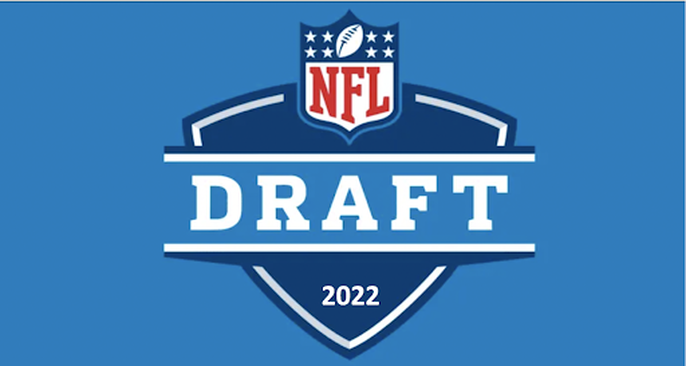
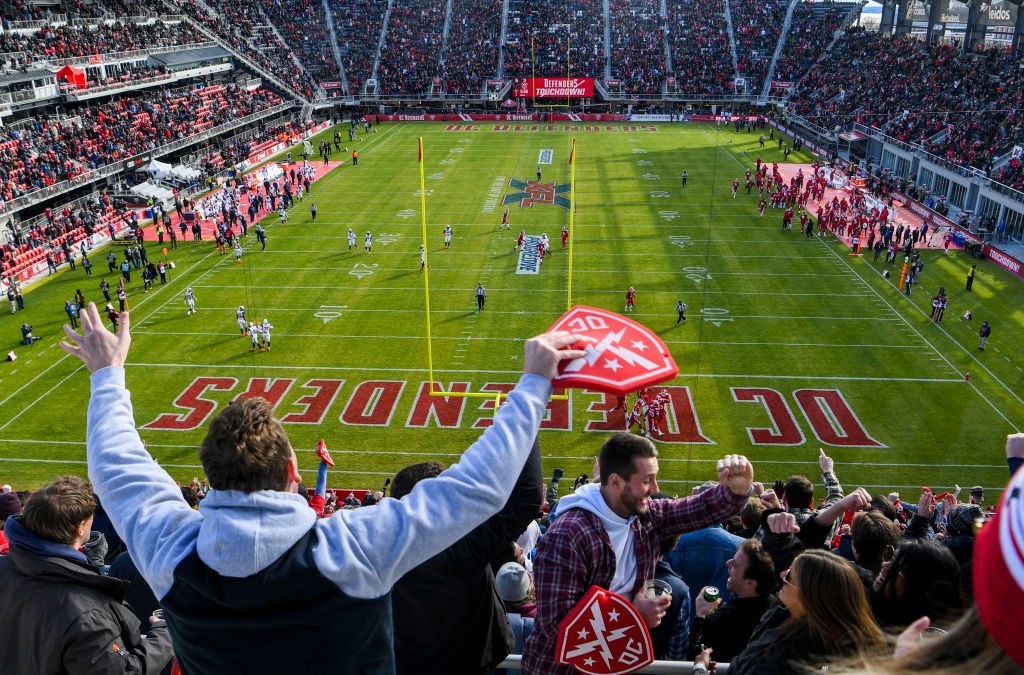
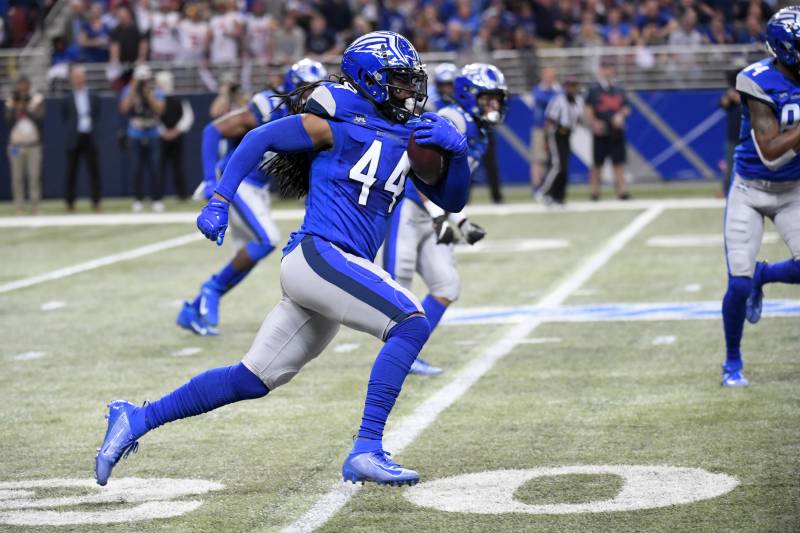
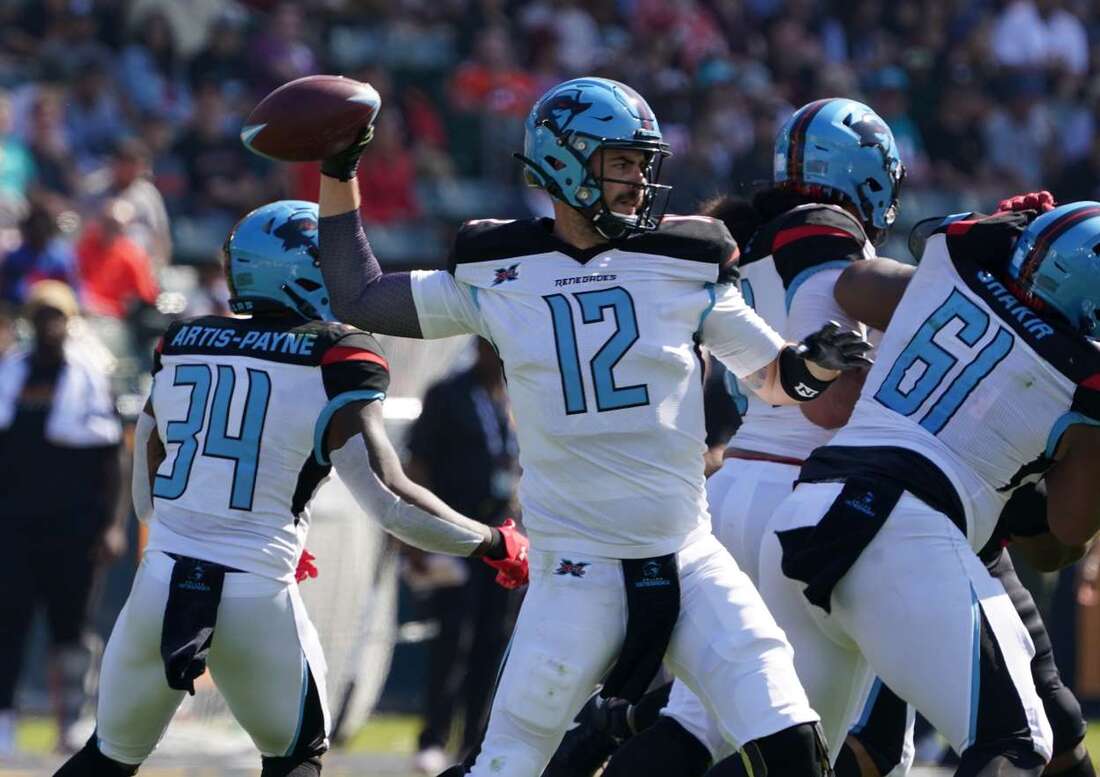
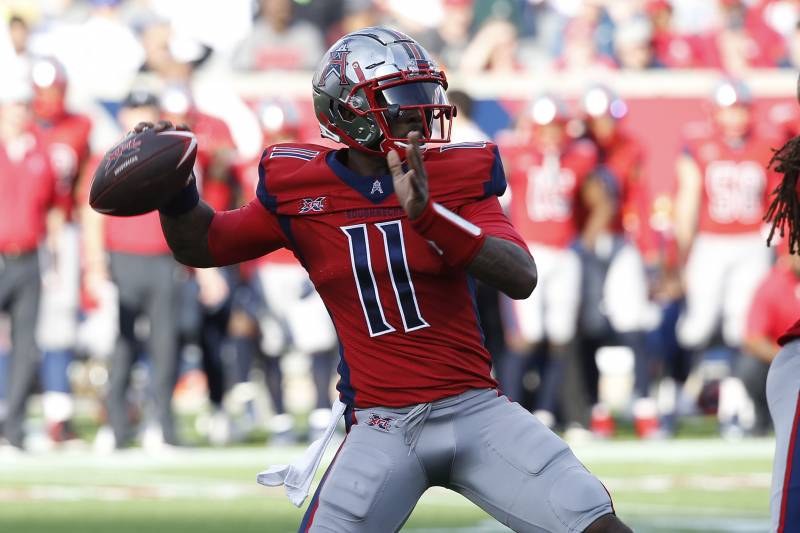
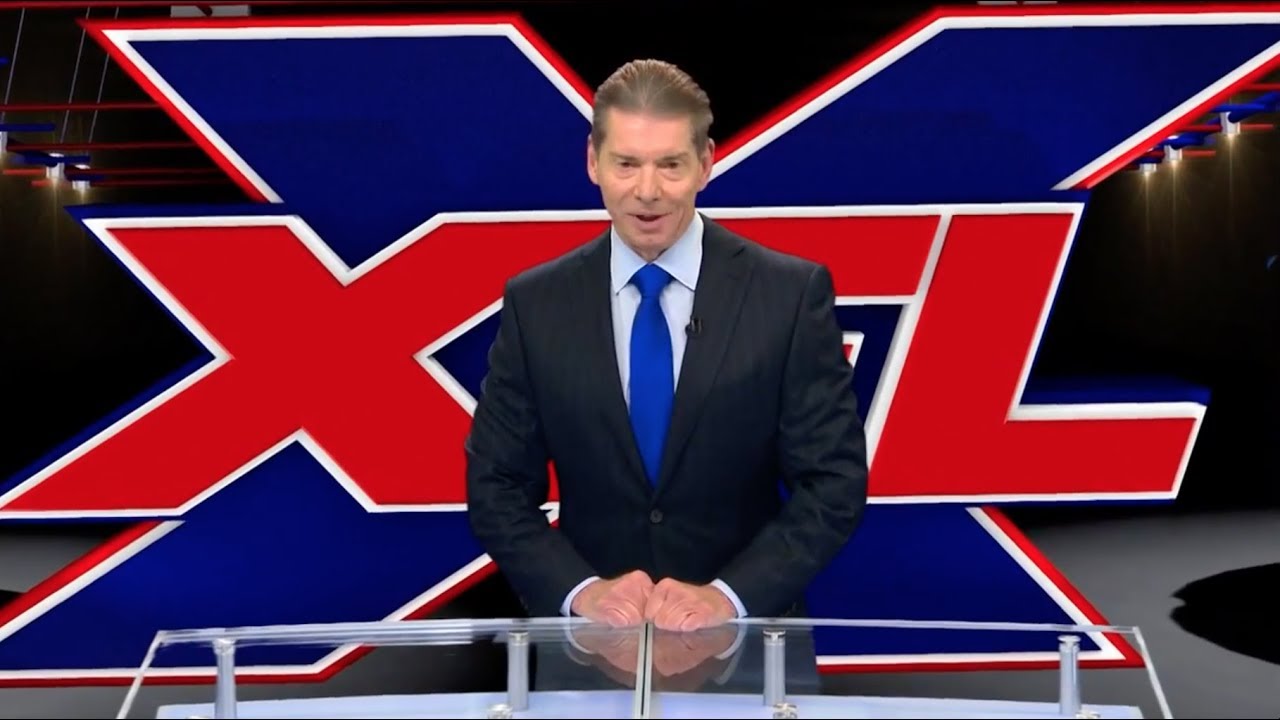
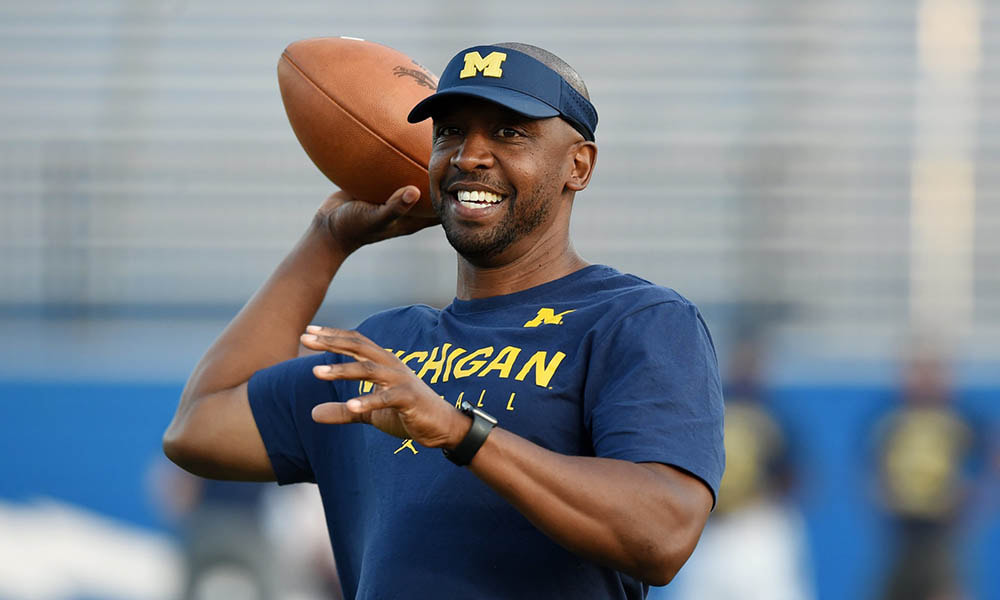
 RSS Feed
RSS Feed
